Best Time to Visit Tokyo
Planning to visit Tokyo, but don't know the best time of year to do so? I'll tell you the best and worst of each season in the Japanese capital.
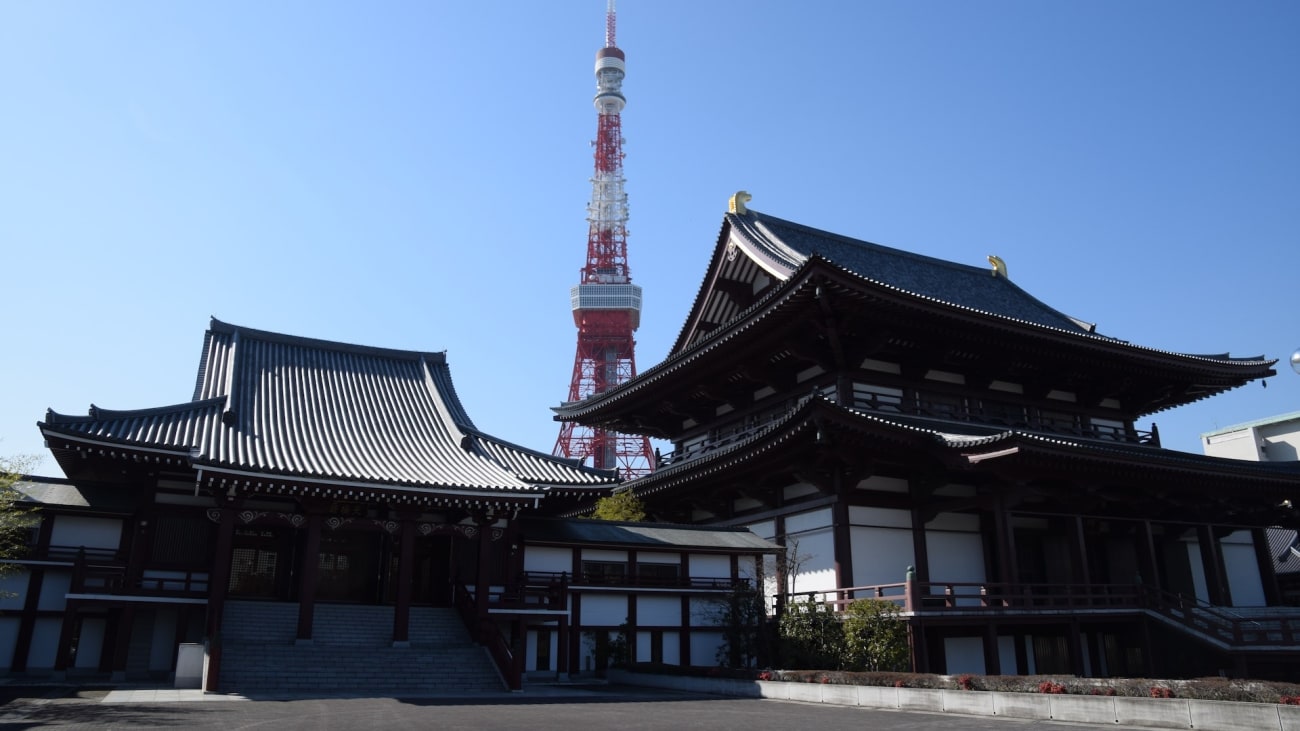
Tokyo | ©Pixabay
The City of the Rising Sun has so many tourist attractions and cultural activities that you won't know where to start, wondering what to see and do in Tokyo during your stay. However, in order to make the most of all the natural attractions and cultural events that the capital of Tokyo has to offer, you'll need to be aware of what the city is like during the different weather seasons of the year.
In the capital of the Rising Sun you will find a varied climate. During the summer you'll experience a very hot atmosphere, high humidity and typhoons, while in autumn you'll enjoy a warm and dry temperature during the day, but quite cool when the sun goes down. In winter, you'll experience bitter cold, snowfall and precipitation. In spring, you'll experience sunny days, warm nights and little rain.
1. When is the best time to visit Tokyo?
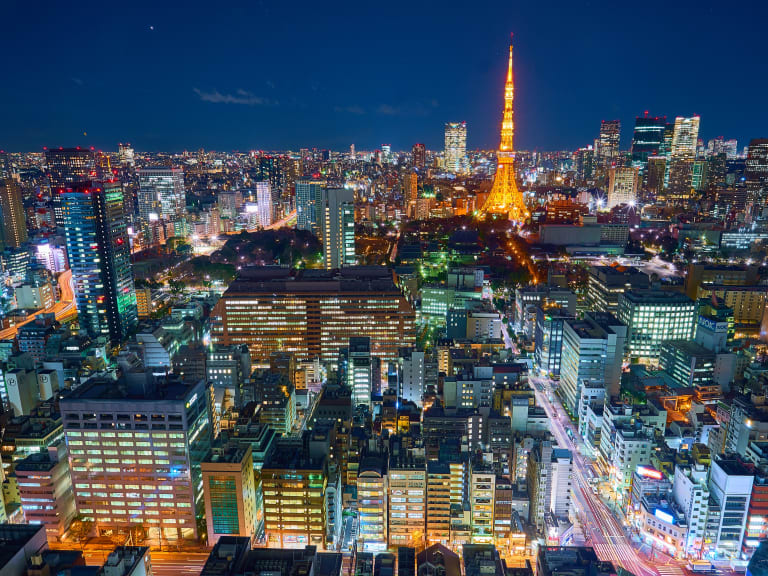
Tokyo's many attractions mean that any time of year is a good time to visit. Determining the best time to visit is not easy, as everyone has their own interests and budgets.
Some may be enthusiastic about winter weather and scenery, while others may want to enjoy the cherry trees or summer festivals, despite the high temperatures.
It all depends on what you want to see and your budget.
- Spring (March, April and May): you will make Hanami to the Sakura blossoms while enjoying pleasant sunny weather with little rainfall. However, the city is very busy and the attractions are always packed with tourists.
- Summer (June, July and August): enjoy festivals, street parades and explore the famous Mount Fuji. However, you'll find very high temperatures, high humidity, high prices and a large number of foreign tourists.
- Japanese autumn (September, October and November): you'll have warm days and cool nights, but you'll eventually experience high winds and rain. In addition, you will notice a low turnout of domestic and international tourists on the city streets.
- Winter (December, January and February): you'll see a less crowded city with a beautiful snowy landscape. Prices are affordable, making it ideal for budget travellers. However, low temperatures may be a problem when visiting certain natural attractions.
While each season has its pros and cons, it's also true that in any season you'll discover a different side to Tokyo. From the subtle colour of the Sakuras (cherry blossoms), to the variety of momiji (red leaves), to the breathtaking snowy landscapes.
All of these are amazing sceneries that you can explore on your own or join one of the best guided tours of Tokyo such as the Tokyo Photo Tour, which will allow you to get unique images of your trip.
2. Visiting Tokyo in the autumn months, the best option
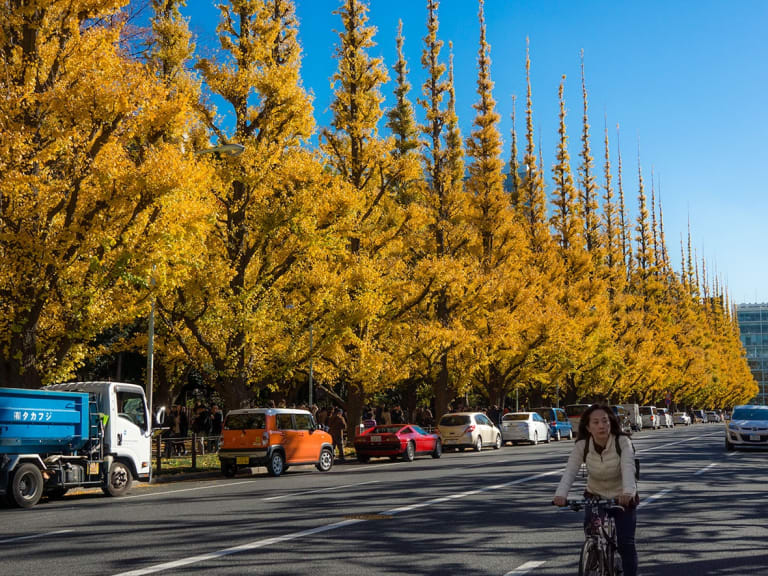
The autumn months are the best time to visit Tokyo in terms of weather conditions. You'll find warm temperatures, low humidity and you won't have to worry about typhoons.
In addition, you'll be able to enjoy the colourful natural scenery on the streets, which, by the way, are easy to walk through as the autumn period is a low touristseason.
During your stay you will find maximum temperatures of 22°C during the day, while the nights are cool, with a minimum of 15°C. Therefore, you can wear sleeveless shirts, shorts and a light coat at night.
You will also have the opportunity to see the momiji (red leaves) of this Asian region. This is a variety of reddish, orange and yellow tones provided by the leaves of maple trees, Ginkgo Biloba and Chinese Sumac, which together create a stunning visual contrast.
Without a doubt, Tokyo in autumn provides a warm and peaceful atmosphere to do Momijigari and get up close and personal with Buddhist and Shinto traditions.
It is also a good time to take part in Tokyo's food tours, as there is an abundance of seasonal produce and foods to sample.
Festivals and holidays in Tokyo in autumn
There are also activities that should be part of the things to see and do in Tokyo in autumn during your stay. Here are just a few of them:
- See momiji (red leaves) in the city's natural areas. You can go to the Imperial Palace, Meiji Jingu Gaien Street, Rikugien Park and Koishikawa Korakuen Park.
- Tokyo Game Show. An annual worldwide event, ideal for enthusiasts of video games and cosplay culture.
- Visit Toshogu Temple, to walk around it, enjoy the scenery and admire an impressive samurai procession.
- Tsukimi or moon festival. This is a celebration with more than 500 years of tradition, held during the month of September. You can eat Tsukimi dangos, enjoy dances, musical performances and the hypnotic autumn full moon from any Shinto shrine, traditional garden, Buddhist temple or Tokyo Tower observation deck.
- Tori no Ichi market in Tokyo's Asakusa district during November. You will see many traditional items used for the Japanese New Year celebration.
3. Visiting Tokyo in spring, the busiest time of year
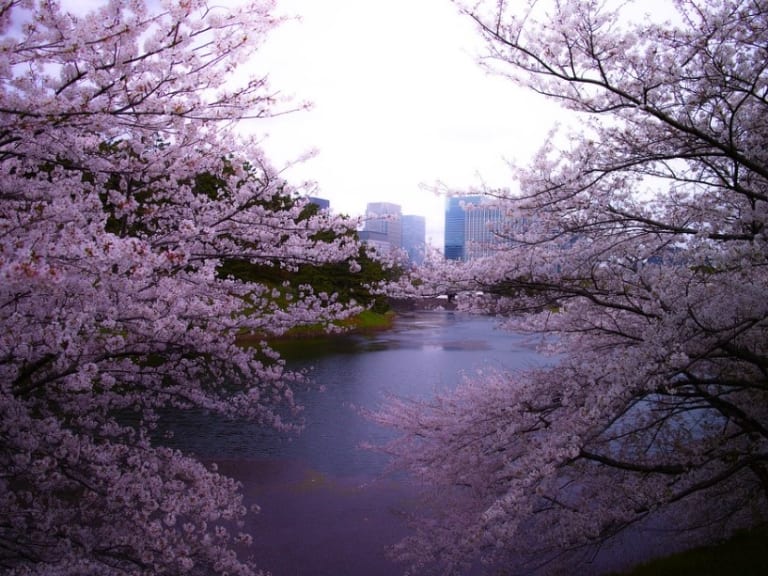
The spring season in the city, between March, April and May, is the busiest time of the year.
Every year, the capital of Tokyo sees a large number of international and domestic tourists. They come to enjoy the scenic beauty of the temples, parks and forests, the traditional celebrations and the pleasant warm weather.
However, be aware that as spring is a busy time in Tokyo, prices for sightseeing, food and general shopping will be higher than usual. In addition, you should plan any individual or group visits you wish to make to avoid any inconvenience with regard to entrance fees.
In fact, it's best to book in advance the day and time of the activity, for example, an excursion to Mount Fuji and Lake Ashi, a Bullet Train tour in Tokyo or attending one of the city's more than 50 museums, among others.
As for the right way to deal with the warm weather, which ranges from 18-24°C during the spring months, try to wear light, cotton clothing as much as possible to keep cool. Also, wear rubber-soled shoes for a comfortable walk.
Holidays and dates in Tokyo in Spring
Spring in Tokyo brings with it a series of well-attended traditional celebrations.
Here is a summary of some of the must-see and must-do activities in Tokyo in spring:
- Hana Matsuri (flower festival): this is the commemoration of the birth of Siddhartha Gautama or Gautama Buddha. Every May 8th, you can visit any of the city's Buddhist temples to enjoy the folklore and religiosity of this important celebration.
- Sanja Matsuri: this is one of the most popular Shinto celebrations in the city, held on the third Friday, third Saturday and third Sunday of May. Tourists and locals alike gather at Tokyo's Asakusa Shrine to honour the founders of the Buddhist temple Sensō-ji. You'll see traditional dances by Maikos (young geisha apprentices) and a series of performances.
- Hanami or sakura (cherry blossom) blossom viewing: this is a natural spectacle that can be seen throughout the city from mid-March to mid-April. You will have the opportunity to visit the city's temples, learn about the history of cherry blossoms and sit under these beautiful trees for a picnic while admiring the sakura and taking pictures.
4. Visiting Tokyo in winter, the season of low prices
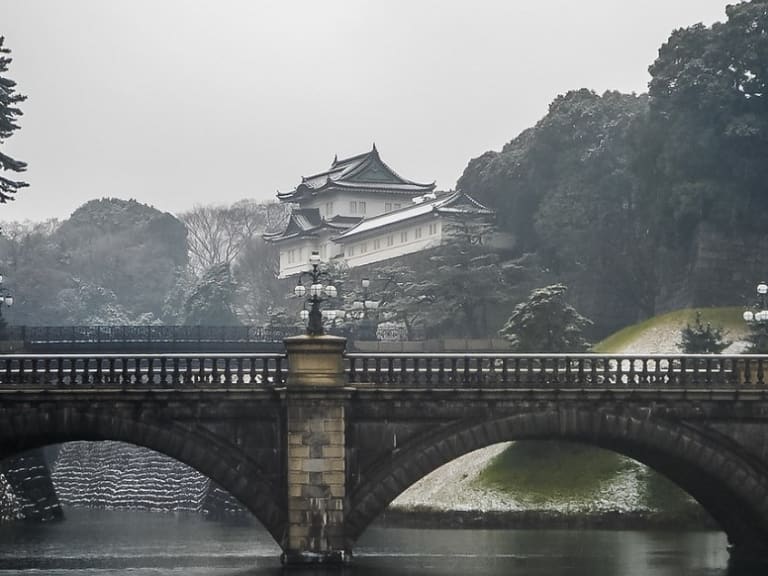
Tokyo in winter is characterised by being an uncrowded city, as this period is the coldest time of the year.
Therefore, if you are a fan of cold temperatures, you will have no problem visiting the Japanese capital during the months of December, January or February.
Travelling in winter has some positive aspects to consider:
- Low prices on accommodation, airlines and entrance fees to the city's various tourist attractions.
- Few tourists in public areas, which is convenient, as you can walk more freely through the streets, get on virtually empty public transport, avoid queues at the ticket office where you can generally spend up to an hour, as in Tokyo DisneyLand.
- Currency exchange rate from euros to yen is favourable compared to other times of the year.
In addition, during the winter period you will be able to enjoy beautiful snowy natural landscapes: parks, public gardens, forests and a breathtaking view of Mount Fuji, among others.
You will undoubtedly see a different side of the city, which is very attractive to travellers, even though it does not show the colourful sakuras (cherry blossoms) and momiji (red leaves).
There are certainly plenty of things to see and do in Tokyo in winter. However, this season tends to be the coldest of the year, especially from mid-December to mid-February, when temperatures drop to around 5°C and do not rise above 13°C.
In any case, you should wear winter clothing in layers: thermal trousers, a T-shirt, a jumper, a scarf, a coat, a hat and gloves.
Holidays and special dates in Tokyo in winter
In winter, as in the rest of the year, you can enjoy various ancient celebrations, which are part of Japan's traditional folklore:
- Ako Gishi-sai Festival on December 14 at Sengaku-ji Temple you can join in the commemoration of the sacrifice and loyalty of the 47 ronin who during the 17th century avenged their feudal lord. You will have the opportunity to light incense and help illuminate the path of these fallen samurai.
- Emperor's Birthday, celebrated on 23 December. On this day, you will have a unique experience, as it is one of the few times when you can see the Imperial Palace of the city open.
- Shogatsu commemoration on the first days of January in all the city's shrines. You can attend to perform the first prayer of the year and join in the Japanese traditions.
- Dezomeshiki or fire brigade parade on January 6th. You will be amazed by the acrobatic show along the streets.
- Setsubun or separation of seasons. This is a celebration to bid farewell to winter, ward off spirits and bring good luck. You will see children in the streets and temples throwing soybeans at people disguised as evil spirits, trying to chase them away.
5. Visiting Tokyo in the summer, a very hot option
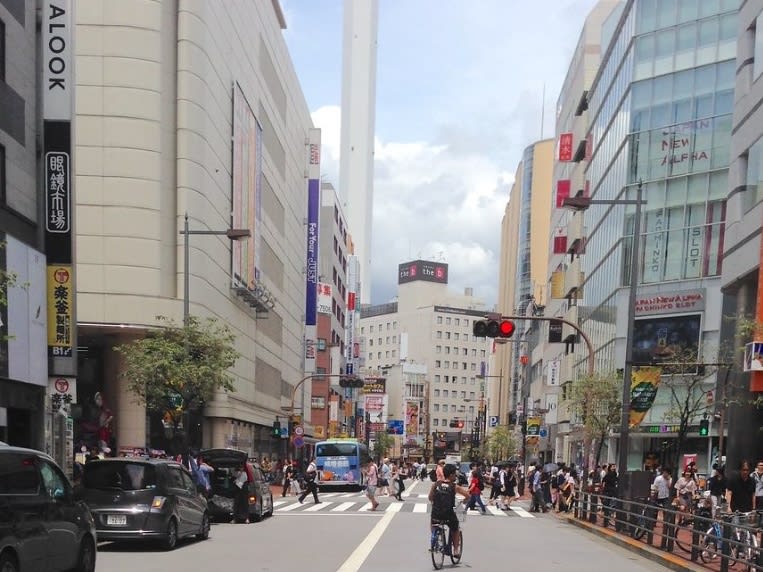
Visiting Tokyo in summer is certainly a hot option, as temperatures average a high of 32°C during the day and 20°C at night.
In addition, the heat during these months is laden with high humidity, making the city feel like a sauna, which is both annoying and physically exhausting.
In summer your budget can't be limited, as prices tend to be high due to high external tourist demand. In fact, you'll need to think ahead when it comes to accommodation so you won't have trouble finding a hotel.
But it's not all bad. In the city of Tokyo you will enjoy clear skies and festivals with beautiful fireworks, ideal to incorporate among the things to see and do in Tokyo at night.
In addition, you will have the chance to do outdoor activities that are not accessible during the rest of the year. Such is the case of visiting Mount Fuji, which only in the summer months offers a safe ascent due to good weather conditions.
You will also see many people on the streets wearing their yukata (traditional Japanese clothing), which, thanks to its cotton fabric, offers great freshness during summer days. In fact, if you want to have a real Japanese experience, you can rent this outfit along with some pokkuri geta or Okobo (wooden platform sandals) and walk the streets of the city.
Holidays and special dates in Tokyo in summer
The hottest months of the year offer many outdoor celebrations and events, which have become a tradition for the Japanese and therefore activities that should not be missing from your list of things to see and do in Tokyo in summer:
- Bon-odori July and August, during these months you will see groups of people (locals and tourists) in the streets, spinning around a tower decorated with paper lanterns and to the beat of drums.
- Mitama Matsuri from 12 to 15 July. For four days you will have the opportunity to watch a series of traditional dances, colourful floats, theatrical performances, food stalls and much more on the main street of Yasukuni Shrine.
- Sumidagawa River on the last Saturday in July. You will enjoy the oldest fireworks display, performed since 1732.
- Fukagawa Hachiman Matsuri, 11-15 August. At the Fukagawa shrine you will see a colourful parade with thousands of attendants to whom you must traditionally throw water to please the gods.
- Winter
- December - February
- Weather Cold and snowy
- High 5°C
- Low 13°C
- Spring
- March - May
- Climate Temperate
- Highest 24°C
- Low 18°C
- Summer
- June - August
- Climate Hot and humid
- Maximum 32°C
- Low 20°C
- Autumn
- September - November
- Climate Temperate
- Maximum 22°C
- Minimum 15°C
